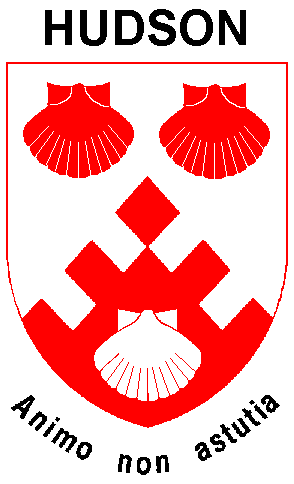|
Hudson - Coat of Arms |
|
| The Hudson family is quite unique in that an early member was
granted a Coat of Arms. Unique because there are over 1 million surnames in the world but
only 75,000 have been granted a Coat of Arms, and how the term arose is interesting. Because wars were a common occurrence during the Middle Ages, more and more armour was added to a knight's battle uniform, such that he was covered from head to foot. And as the metal suit included a helmet to protect the head, it was nearly impossible to distinguish one knight from another, or to tell friend from foe. A solution arose whereby knights painted a pattern on their battle shield. These patterns were eventually woven into cloth surcoats which were worn over the suit of armour. To the wearer, this colourful identification became as important as his surname. The first Arms were quite simple, consisting only of a shield with horizontal or vertical bands. As more designs were created, it became necessary to register or copyright the designs to prevent two knights from using the same insignia. These records called blazons or armourials listed the family name and an exact description of the Coat of Arms. The word heraldry is associated with the Coat of Arms as it was the role of a herald to record the blazons. Tournaments or jousting contests were popular during the days of knighthood and as each soldier was presented at a tournament, a herald sounded a trumpet and then announced the knight's achievements and described his Coat of Arms. For the Hudson knight's, Coat of Arms, which are shown on the back cover of this book, the herald would have recorded the brief description. - 'PER CHEV. EMBATTLED AR. AND GU. Translated into something we could understand
would read. - |
|
A further note of explanation. The chevron(ic line) symbolises protection and has often been placed on Arms to tell others that its bearer achieved some notable feat. Silver (or white) represents serenity and nobility. Red represents fortitude and creative power. The 3 scallop shells indicate an affinity with the sea. Underneath the design is a Latin motto, ANIMO NON ASTUTIA This literally translates into, BY COURAGE NOT BY STRATEGEM or, BY COURAGE NOT BY DECEPTION. |
|
|
|
|
